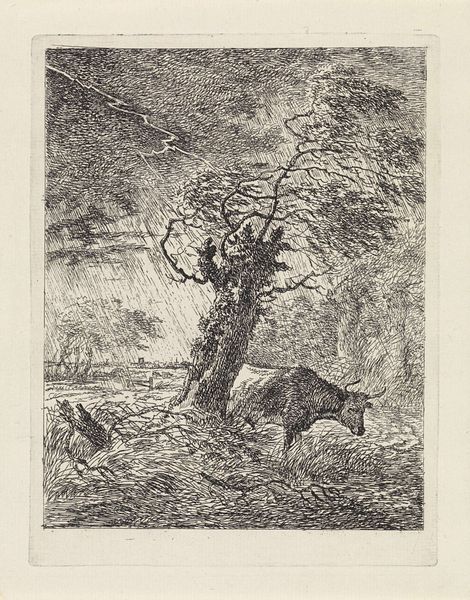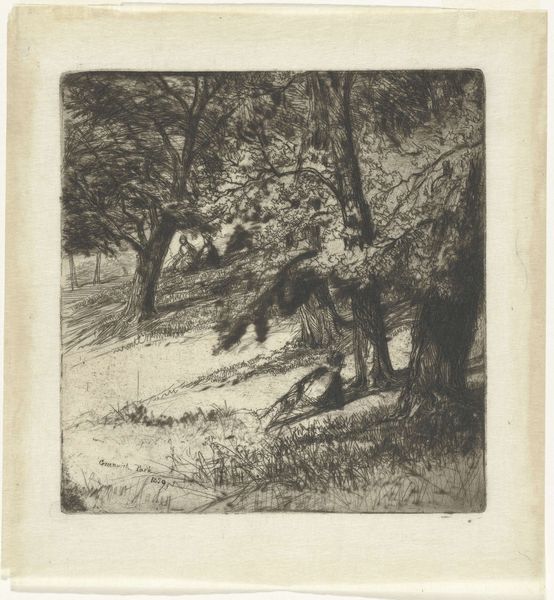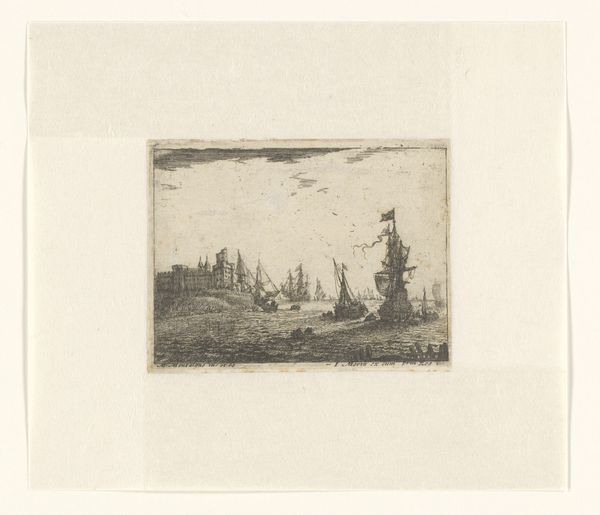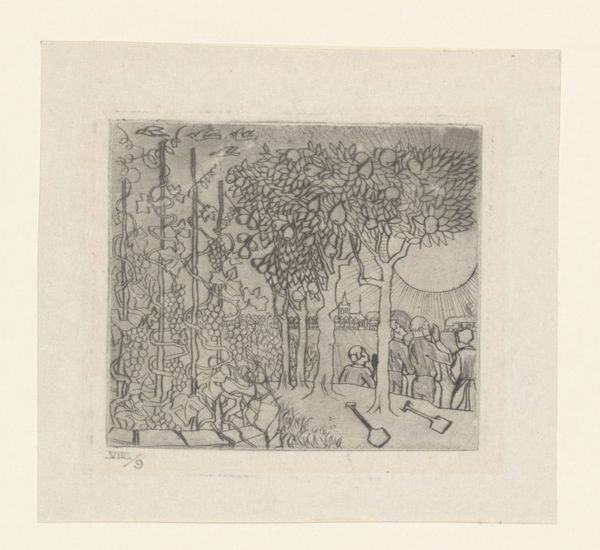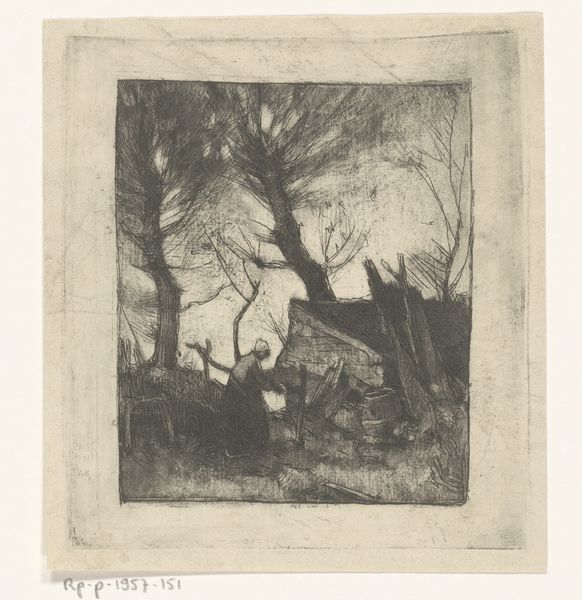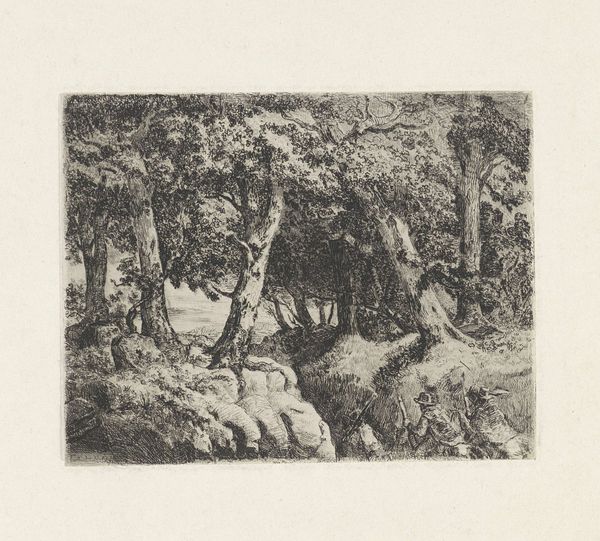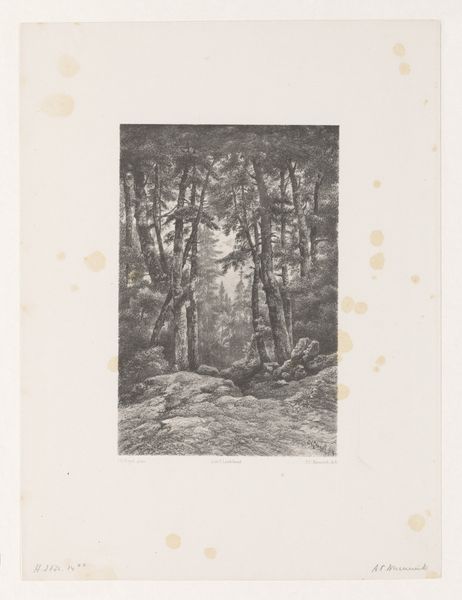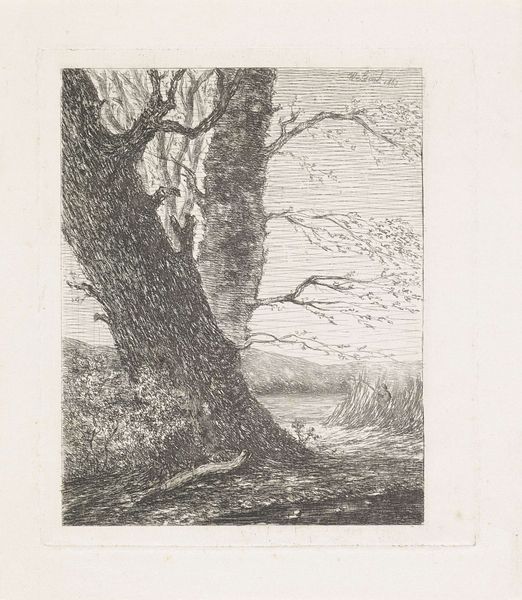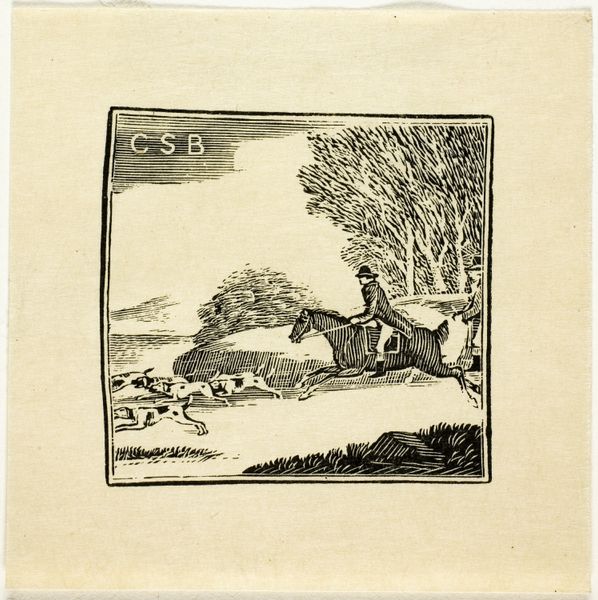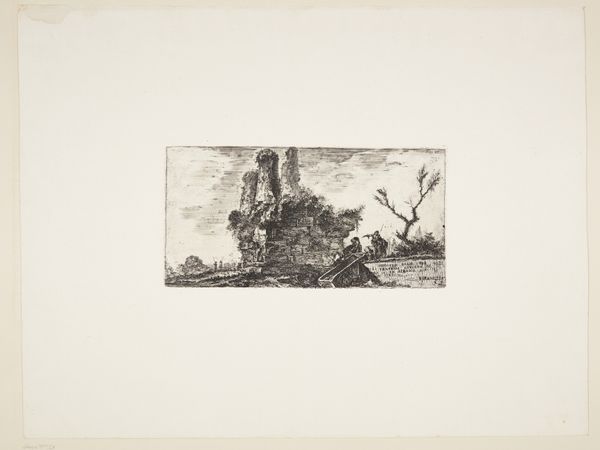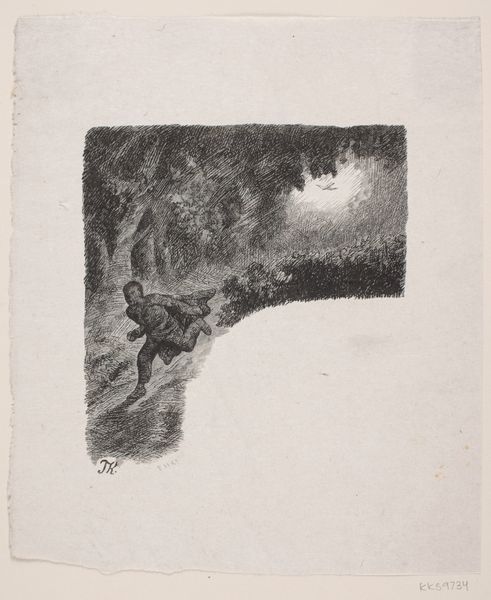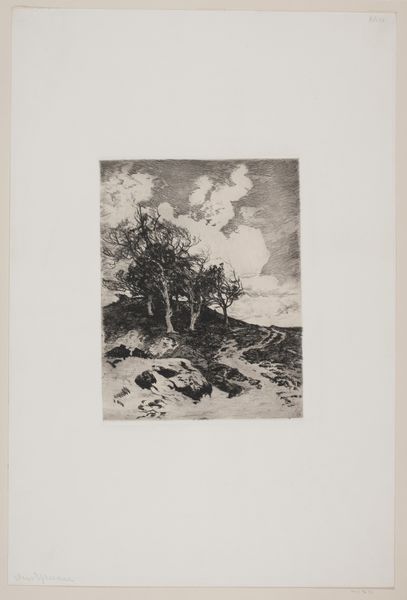
drawing, print, etching
#
drawing
#
light pencil work
#
quirky sketch
# print
#
pen sketch
#
etching
#
pencil sketch
#
old engraving style
#
landscape
#
personal sketchbook
#
pen-ink sketch
#
line
#
sketchbook drawing
#
sketchbook art
#
fantasy sketch
#
realism
Dimensions: height 136 mm, width 137 mm
Copyright: Rijks Museum: Open Domain
Curator: Welcome to the Rijksmuseum. Today, we're observing "Two Deer by a Pine Tree." The piece is attributed to Dirk Arnoldus Tavenraat, and its production date lies somewhere between 1855 and 1930. It's an etching. Editor: It's sparse, isn't it? Makes you feel like you're standing on a windswept hill under a bleak sky. Very minimal, but the textures in the tree are compelling. Curator: Interesting you say that, considering the possible range of years when this was made. This etching participates in the Romantic movement's revival of landscape, doesn’t it? Tavenraat is consciously pulling from artistic traditions of the past, placing animals in relationship with nature, which speaks to a cultural nostalgia for a rural past, idealized or not. Editor: And the material qualities contribute to that mood. It looks almost like a personal sketchbook drawing – see the quick, light marks? It feels very immediate, focusing on the process of sketching a fleeting observation. I'm wondering about the kind of tools that would be employed to generate such a quick result – different grades of graphite and a soft paper. Curator: The proliferation of prints and etchings, especially of landscapes and animals, served a growing market of middle-class collectors. They are participating in a broader cultural narrative, a national pride if you will, where landscape played an important role. Consider where this work would have been displayed - most likely in someone's home, influencing tastes and the cultural meaning of such a work. Editor: Absolutely. And, in those homes, this little etching might also reflect an emerging interest in wilderness preservation... almost a precursor to modern environmentalism given that nature has long served industrial expansion. But seeing the textures of nature preserved with accessible materials... that strikes me as deeply relevant. Curator: Precisely! An accessible landscape, and the popularization of it, created a certain kind of consciousness, a new vision. Editor: Well, this has really made me rethink the political potential embedded within an image as seemingly simple as this one! Curator: Me too. Etchings, seemingly innocuous, become active participants in the cultural narratives we inherit.
Comments
No comments
Be the first to comment and join the conversation on the ultimate creative platform.
